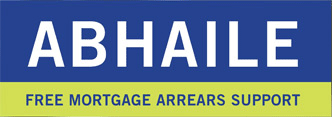Regain control of your finances with expert guidance
Struggling with debt can feel overwhelming, but finding the right solution shouldn’t be. At Grant Thornton, we specialise in helping individuals and families achieve financial stability through expert debt resolution strategies. Whether you’re facing mortgage arrears, personal debt, or financial hardship, our Personal Insolvency Practitioners (PIPs) work with you to develop a structured, legally enforceable plan that puts you on the path to financial recovery.
We take the stress out of dealing with creditors, providing expert negotiation and legal protection while ensuring you retain a reasonable standard of living. With our tailored solutions, you can move forward with confidence. Take the first step—contact us today for a free consultation.

FAQs about personal insolvency
Living in debt can put a real strain on daily life and at times it can be hard to see light at the end of the tunnel. You are certainly not alone and as a result, in 2012 the Government introduced personal insolvency solutions through new legislation to help mortgage holders and people with unsustainable debt to reach agreements with their creditors.
Here’s how a Personal Insolvency Practitioner (PIP) can assist:
- A Personal Insolvency Practitioner (PIP) will work with you and engage with your creditors for you. Over 11,000 solutions have been put in place by PIPs nationwide.
- You get protection from your creditors: a protective certificate is issued giving you legal protection from your creditors while we negotiate a potential arrangement.
- The spirit of the legislation is to keep people in their family homes.
- You are allowed a reasonable standard of living when you are in an arrangement.
- Not all of your creditors need to agree to your arrangement.
- Debt is legally written off once your arrangement finishes.
- Appeal: if your creditors do not agree with your arrangement, you can potentially appeal their decision before a personal insolvency judge for which the government pays your fees.

Why Grant Thornton
With Grant Thornton, you receive:
- Proven expertise – Our team of experienced Personal Insolvency Practitioners has successfully helped thousands regain financial control.
- High success rate – Over 90% of our negotiated arrangements are accepted on the first submission.
- Tailored solutions – We assess your financial situation and create a personalised strategy to reduce debt stress and secure a sustainable future.
- Comprehensive support – From negotiating with creditors to managing legal processes, we handle every aspect so you can focus on moving forward.
- Legal protection – We help secure protective certificates, giving you time to restructure your finances without creditor pressure.
- Nationwide accessibility – With offices across Ireland, we offer confidential, in-person or remote consultations at a time that suits you.
Contact us
Ready to take the next step? Take control of your financial future by booking a free, confidential in-person or virtual consultation with our experts at Grant Thornton and start your journey towards debt resolution today.
Leinster & Connacht
Munster
Ulster
Nicholas O’Dwyer, Michael McAteer, Billy Murphy, Ken Gannon and Jennifer O’Brien are authorised by the Insolvency Service of Ireland to carry on practice as a personal insolvency practitioner.










